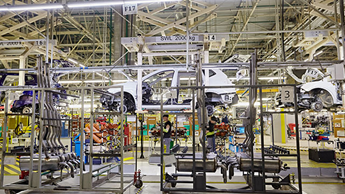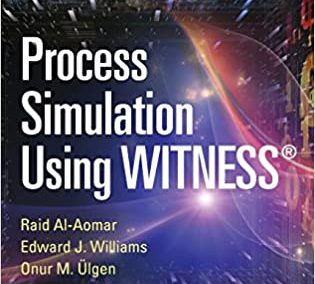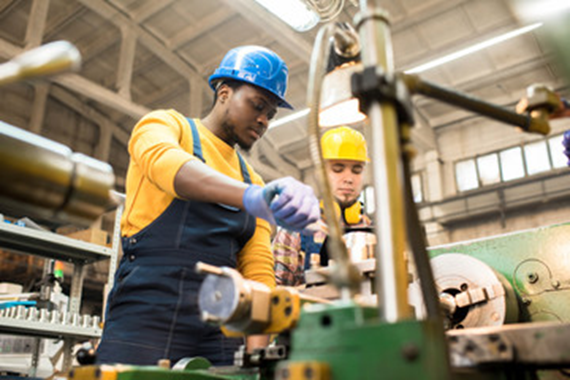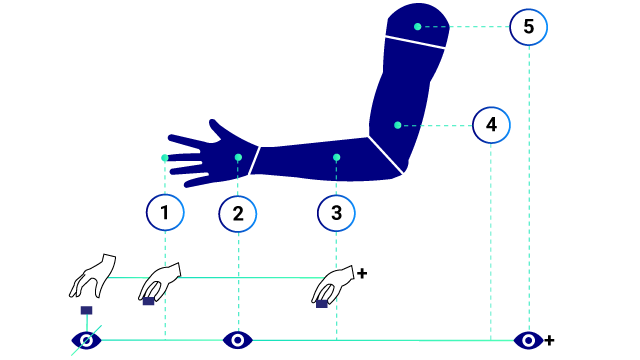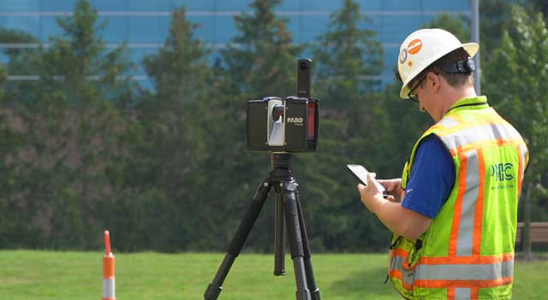What Is Simulation Modeling?
Raid Al-Aomar, Edward J.Williams and Onur M. Ülgen.
So, What Exactly Is Simulation Modeling?
Simulation Modeling is the art and science of capturing the functionality and the relevant characteristics of real-world systems. Modeling involves presenting such systems in a form that provides sufficient knowledge and facilitates system analyses and improvement. Physical, graphical, mathematical, and computer models are the major types of models developed for different purposes and applications.
This blog posts focuses on defining the simulation concept, developing a taxonomy of different types of simulation models, and explaining the role of simulation in planning, designing, and improving the performance of business and production systems.
Simulation Defined
Simulation is a widely used term in reference to computer models that represent physical systems (products or processes). It provides a simplified representation that captures important operational features of a real system. For example, FEA represents the mathematical basis for a camshaft product simulation. Similarly, production flow, scheduling rules, and operating pattern represent the logical basis for developing a plant process model.
System simulation model is the computer mimicking of the complex, stochastic, and dynamic operation of a real-world system (including inputs, elements, logic, controls, and outputs). Examples of system simulation models include mimicking the day-to-day operation of a bank, the production flow in an assembly line, or the departure/arrival schedule in an airport. As an alternative to impractical mathematical models or costly physical prototypes, computer simulation has made it possible to model and analyze real-world systems.
As shown in the figure below, the primary requirements for simulation are: a system to be simulated, a simulation analyst, a computer system, and simulation software. The analyst has a pivotal role in the simulation process. He or she is responsible for understanding the real-world system (inputs, elements, logic, and outputs), developing a conceptual model, and collecting pertinent data. The analyst then operates the computer system and uses the simulation software to build, validate, and verify the system simulation model. Finally, the analyst analyzes simulation results and determines best process setting.
Computer system provides the hardware and software tools required to operate and run the simulation model. The simulation software or language provides the platform and environment that facilitates model building, testing, debugging, and running. The simulation analyst utilizes the simulation software on a capable computer system to develop a system simulation model that can be used as a practical (close-to-reality) representation of the actual system.
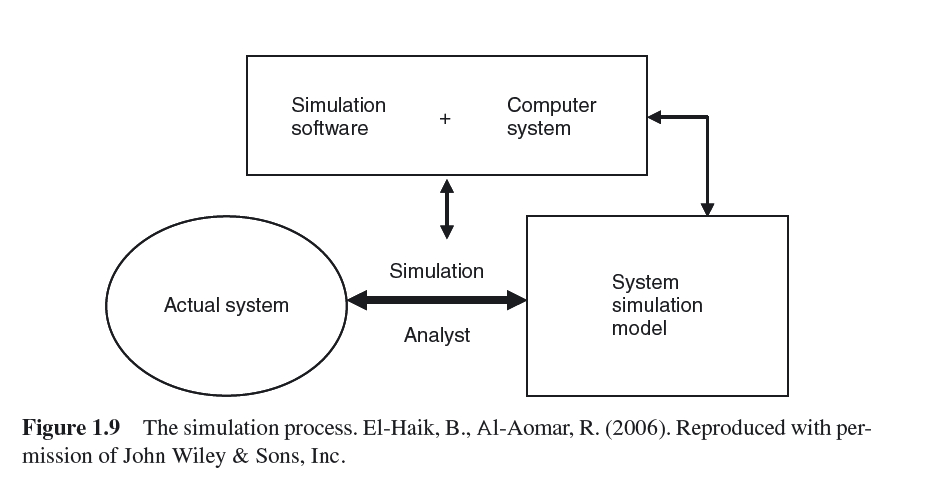
Simulation Taxonomy
Based on the selected internal representation scheme, simulation models can be discrete, continuous, or combined. DES models, which are the focus of this book, are the most common among simulation types. DES models are based on a discrete internal representation of model variables (variables that change their state at discrete points in time). In general, discrete simulation models focus on modeling discrete variables that receive values from random or probabilistic distributions, where the state of the system changes in discrete points in time. A discrete variable can be the number of customers in a bank, products and components in an assembly process, or cars in a drive-through restaurant.
Continuous simulation models, on the other hand, focus on continuous variables, receiving values from random or probabilistic distributions, where the state of the system changes continuously. Examples of continuous variables include waiting time, level of water behind a dam, and fluids flow in chemical processes and distribution pipes. Continuous simulation is less popular than discrete simulation since the majority of production and business systems are modeled using discrete random variables (customers, units, entities, orders, etc.).
Combined simulation models include both discrete and continuous elements in the model. For example, separate (discrete) fluid containers arrive to a chemical process where fluids are poured into a reservoir to be processed in a continuous manner. This kind of simulation requires the capability to define and track both discrete and continuous variables.
Furthermore, models are either deterministic or stochastic. A stochastic process is modeled using probabilistic models. Examples of stochastic models include customers arriving to a bank, servicing customers, and equipment failure. In these examples, the random variable can be the inter-arrival time, the service or processing time, and equipment time to failure (TTF), respectively.
Deterministic models, on the other hand, involve no random or probabilistic variables in their processes. Examples include modeling fixed cycle time operations in an automated system or modeling the scheduled arrivals to a clinic. The majority of real-world operations are probabilistic. Hence most simulation studies involve random generation and sampling from theoretical or empirical probability distributions to model random system variables. Variability in model inputs leads to variability in model outputs. As shown in the figure below, a deterministic model Y = f(X) will generate a stochastic response (Y) when model inputs (X1, X2, and X3) are stochastic. If the response represents the productivity of a production system, model inputs such as parts arrival rates, demand forecast, and model mix generate a variable production rate.
What’s Next?
Finally, and based on the nature of model evolvement with time, models can be static or dynamic. As shown in the figure below, a simulation model can involve both static and dynamic responses. In static models, system state (defined in state variables) does not change over time. For example, a static variable (X1) can be a fixed number of workers in an assembly line, which does not change with time. Alternatively, a dynamic variable (X2) can be the number of units in a buffer, which changes dynamically over time. Monte Carlo Simulation models are time independent (static) models that deal with a system of fixed state. In such spreadsheet-like models, certain variable values change based on random distributions and performance measure are evaluated per such changes without considering the timing and the dynamics of such changes. Most operational models are, however, dynamic. System state variables often change with time and the interactions that result from such dynamic changes do impact the system behavior.
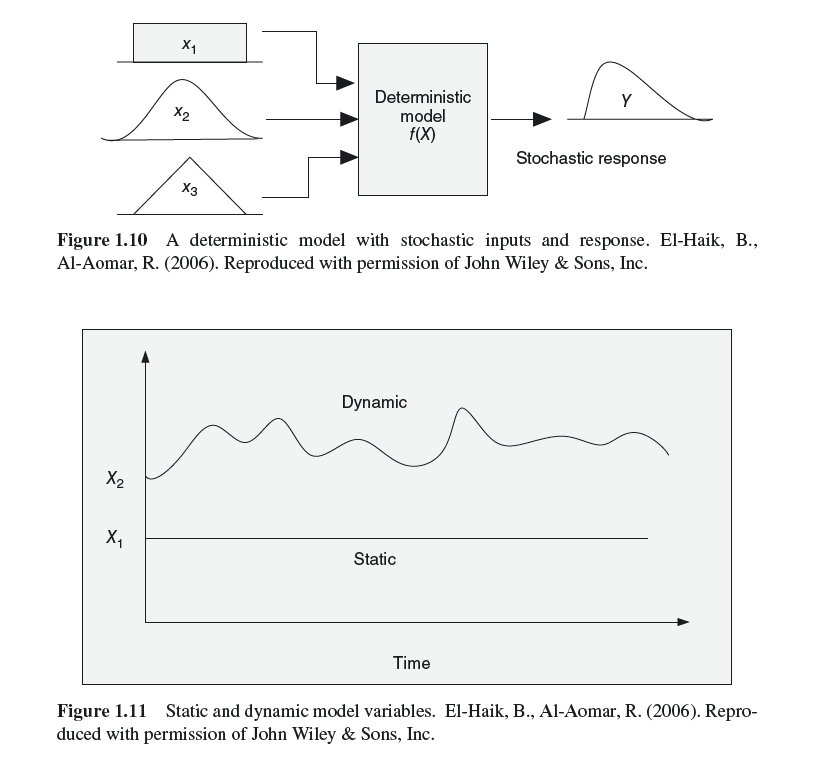
Dynamic simulation models are further divided into terminating and nonterminating models based on run time. Terminating models are stopped by a certain natural event such as the number of items processed or reaching a certain condition. For example, a bank model stops at the end of the day and a workshop model stops when finishing all tasks in a certain order. These models are impacted by initial conditions (system status at the start). Nonterminating models, on the other hand, can run continuously making the impact of initialization negligible. For example, a plant runs in continuous mode where production starts every shift without emptying the system. The run time for such models is often determined statistically to obtain a steady-state response. The figure below presents a simulation taxonomy with highlighted attributes of DES (discrete, stochastic, and dynamic models of terminating or nonterminating response).
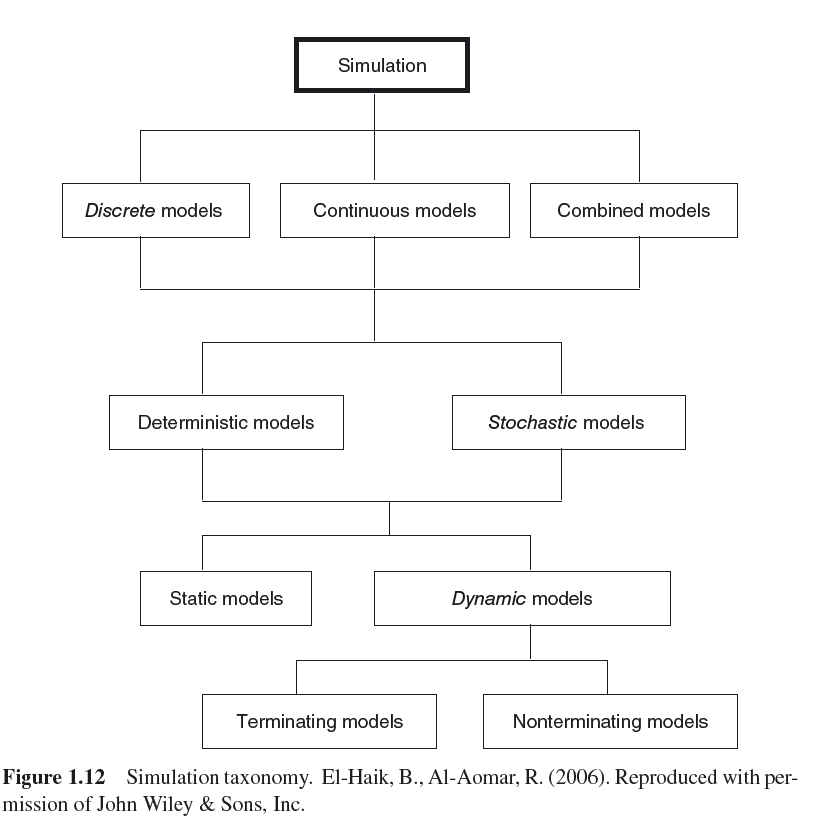
This content featured is an excerpt from Process Simulation Using WITNESS®, First Edition. Raid Al-Aomar, Edward J.Williams and Onur M. Ülgen.
© 2015 John Wiley & Sons, Inc. Published 2015 by John Wiley & Sons, Inc.
Let our experts show you how our Services can support your projects!
Recent posts
